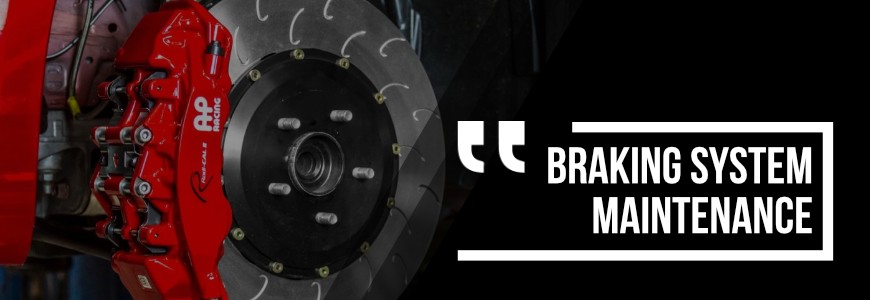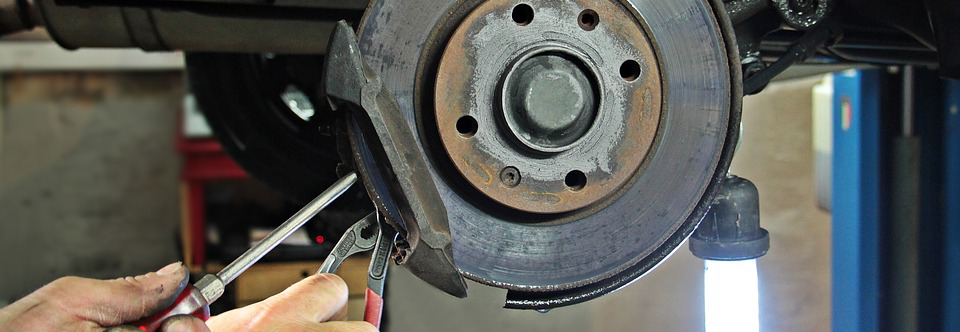
When preparing for the onset of winter, check the condition of the vehicle and pay special attention to its braking system. In addition to buying antifreeze washer fluid and changing tires, you will also need to check the condition of brake shoes, discs and brake fluid. Even the newest winter tires will not save from accidents if the car brakes are faulty.
Braking system is an essential component of a vehicle's safety system. Let’s observe the braking system components that constantly interact with each other: brake shoes, discs, drums, brake fluid. Even if one of the above mentioned components fails, the productivity of the whole system will be significantly reduced.
Brake shoes
Brake shoes are in constant contact with brake discs or drums. They force the discs to slow down the vehicle or to stop it completely. During braking, the brake shoes may heat up to a high temperature of about 800 C. For this reason, it is necessary to pay attention to the quality when buying brake shoes.
The service life of brake shoes depends on many factors, but mainly on the material of which the friction linings are made. Normally the brake shoes should be replaced every 10 - 15 thousand kilometers of mileage, depending on the way of driving and road conditions. There are several main signs indicating that urgent replacement of brake calipers is required: characteristic high sound (squeak) during braking; reduced braking efficiency in the perception of the driver; yanking on the brake is accompanied by jolting sensations, as if the car is overcoming obstacles or bumps.
Brake discs
Pulling the break leads to clamping of a metal disc rigidly connected to the wheel - that’s how braking works. Today, the disc brake is the most popular mechanism, as this particular design guarantees high braking efficiency in various weather conditions.
Brake discs are wearable parts, thus their thickness and the condition of their surfaces should be checked on a regular basis. Technical condition of the discs is usually checked during the schedule replacement of brake calipers.

Brake fluid
Brake fluid is intended to transmit the mechanical effort to the braking mechanisms when tapping the brake pedal.
Monitoring of the brake fluid condition includes two important points: control of fluid level in the reserve tank and of moisture percentage. A quick level decrease of the brake fluid in the reserve tank is a sign of leakage and a serious reason for turning to a service station for help. Also, the brake fluid should be changed every 30-40 thousand kilometers of mileage. Service stations use special devices to check the condition of the brake fluid.
The intricacies of car servicing
Braking system malfunctions cause more than 40% of all road accidents. Therefore, every driver should be aware of possible braking system failures in order to prevent emergency situations.
Symptoms of malfunction:
- the brake pedal travel has increased while braking efficiency has decreased;
- the wheels are released only partially;
- one of the wheels is braking slightly when the pedal is released;
- extraneous sounds can be heard, including hammering, whistling, vibrations;
- the car is drifting from side to side;
- foot pressure on the pedal needs to be increased.
Leakage of brake fluid, ingress of air into the braking system, increased runout of the discs and significant wear of rubber seals are primary reasons for the increased pedal travel.
Inefficient braking is caused by: brake shoes damage or greasing, piston seizure, components overheat, use of inappropriate brake shoe linings, brake circuits depressurization, problems in pressure regulator settings.
There are several reasons why the car wheels do not release fully: brake pedal free play is absent; the adjustment bolt of the brake booster rod bulges out; the piston of the main cylinder is stuck; rubber seals are swelled.
If one of the wheels slows down when the brake is released, the reason for this may be: corrosion-caused piston seizure, swelling and deformation of cylinder gaskets, incorrect adjustment of a handbrake, improper installation of a brake caliper.
Extraneous sounds can result from the following: greasy or dirty friction linings; loosened tension of the brake springs; general wear and tear of the discs and the linings.
The cause of sidewise skidding, when tapping brake pedal, can be: blockage of the steel tube due to the dents or clogging, jammed piston, dirty or greasy discs, brake circuit operation problems, incorrect wheel leaning angle, unequal pressures in the wheels.
When application of brakes requires bigger effort from the driver then usually, it signals the following problems: a faulty brake booster, deformation of cylinder gaskets.
Conclusion
To sum up, we can say that any trouble in the braking system is the reason to seek help from a specialized service center. To keep the braking system always in good condition, a mandatory, regular technical inspection is required. Maintenance helps to quickly identify and eliminate possible failures.
Proper and timely maintenance of the braking system guarantees complete control over the vehicle in all winter situations.



COMMENTS